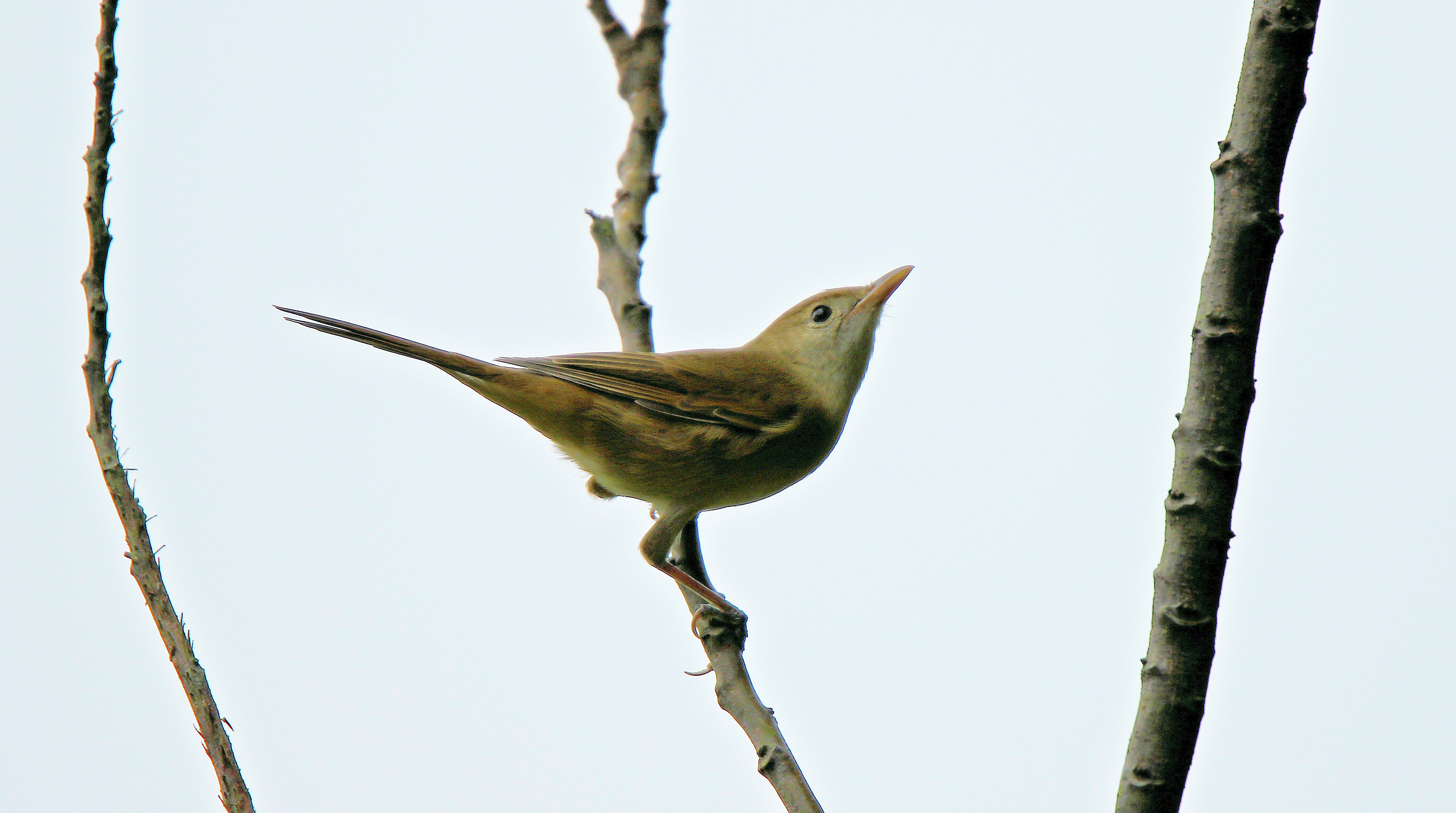Thick-billed Warbler on:
[Wikipedia]
[Google]
[Amazon]
The thick-billed warbler (''Arundinax aedon'') breeds in the temperate east  The song is fast and loud, and similar to the
The song is fast and loud, and similar to the
Palearctic
The Palearctic or Palaearctic is the largest of the eight biogeographic realms of the Earth. It stretches across all of Eurasia north of the foothills of the Himalayas, and North Africa.
The realm consists of several bioregions: the Euro-Sibe ...
, from south Siberia to west Mongolia. It is migratory, wintering in tropical South Asia
South Asia is the southern subregion of Asia, which is defined in both geographical and ethno-cultural terms. The region consists of the countries of Afghanistan, Bangladesh, Bhutan, India, Maldives, Nepal, Pakistan, and Sri Lanka.;;;;;;;; ...
and South-east Asia
Southeast Asia, also spelled South East Asia and South-East Asia, and also known as Southeastern Asia, South-eastern Asia or SEA, is the geographical south-eastern region of Asia, consisting of the regions that are situated south of mainland ...
. It is a very rare vagrant to western Europe
Europe is a large peninsula conventionally considered a continent in its own right because of its great physical size and the weight of its history and traditions. Europe is also considered a Continent#Subcontinents, subcontinent of Eurasia ...
.
This passerine
A passerine () is any bird of the order Passeriformes (; from Latin 'sparrow' and '-shaped'), which includes more than half of all bird species. Sometimes known as perching birds, passerines are distinguished from other orders of birds by t ...
bird
Birds are a group of warm-blooded vertebrates constituting the class Aves (), characterised by feathers, toothless beaked jaws, the laying of hard-shelled eggs, a high metabolic rate, a four-chambered heart, and a strong yet lightweigh ...
is a species found in dense vegetation such as reeds, bushes and thick undergrowth. Five or six egg
An egg is an organic vessel grown by an animal to carry a possibly fertilized egg cell (a zygote) and to incubate from it an embryo within the egg until the embryo has become an animal fetus that can survive on its own, at which point the a ...
s are laid in a nest in a low tree.
This is a large warbler, at long, which is nearly as big as the great reed warbler
The great reed warbler (''Acrocephalus arundinaceus'') is a Eurasian passerine in the genus '' Acrocephalus''.
The genus name ''Acrocephalus'' is from Ancient Greek ''akros'', "highest", and ''kephale'', "head". It is possible that Naumann and ...
. The adult has an unstreaked brown back and buff underparts, with few obvious distinctive plumage
Plumage ( "feather") is a layer of feathers that covers a bird and the pattern, colour, and arrangement of those feathers. The pattern and colours of plumage differ between species and subspecies and may vary with age classes. Within species, ...
features. The forehead is rounded, and the bill is short and pointed. The sexes are identical, as with most warblers, but young birds are richer buff below. Like most warblers, it is insectivorous, but will take other small prey items.
 The song is fast and loud, and similar to the
The song is fast and loud, and similar to the marsh warbler
The marsh warbler (''Acrocephalus palustris'') is an Old World warbler currently classified in the family Acrocephalidae. It breeds in temperate Europe and the western Palearctic and winters mainly in southeast Africa. It is notable for incorpora ...
, with much mimicry and typically acrocephaline whistles added.
It was sometimes placed in the monotypic genus ''Phragmaticola'' (or ''Phragamaticola'') and for a long time as ''Acrocephalus'' and in 2009 suggested as being within the ''Iduna'' clade. However, a 2014 phylogeny study based on more loci indicated that it did not fit into the ''Iduna'' clade, and therefore suggested a resurrection of the genus ''Phragamaticola'' or ''Arundinax''; the latter, being the older available genus name, has priority.
The genus ''Arundinax'' is from Latin
Latin (, or , ) is a classical language belonging to the Italic branch of the Indo-European languages. Latin was originally a dialect spoken in the lower Tiber area (then known as Latium) around present-day Rome, but through the power of the ...
''arundo, arundinis'' meaning "reed" and Ancient Greek
Ancient Greek includes the forms of the Greek language used in ancient Greece and the ancient world from around 1500 BC to 300 BC. It is often roughly divided into the following periods: Mycenaean Greek (), Dark Ages (), the Archaic peri ...
''anax'' which means "master". The specific ''aedon'' is from Ancient Greek ''aedon'' and means nightingale
The common nightingale, rufous nightingale or simply nightingale (''Luscinia megarhynchos''), is a small passerine bird best known for its powerful and beautiful song. It was formerly classed as a member of the thrush family Turdidae, but is no ...
. In Greek mythology
A major branch of classical mythology, Greek mythology is the body of myths originally told by the Ancient Greece, ancient Greeks, and a genre of Ancient Greek folklore. These stories concern the Cosmogony, origin and Cosmology#Metaphysical co ...
, Aëdon was changed into a nightingale after killing her own son while attempting to murder one of the sons of her sister Niobe
In Greek mythology, Niobe (; grc-gre, Νιόβη ) was a daughter of Tantalus and of either Dione, the most frequently cited, or of Eurythemista or Euryanassa, the wife of Amphion and the sister of Pelops and Broteas.
Her father was the ru ...
.
References
thick-billed warbler Birds of North Asia Birds of Mongolia Birds of Manchuria thick-billed warbler {{Acrocephalidae-stub